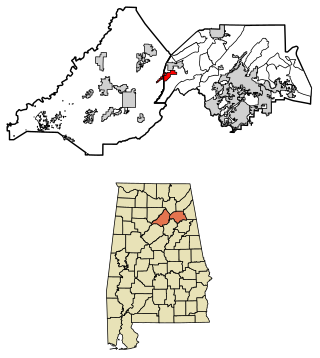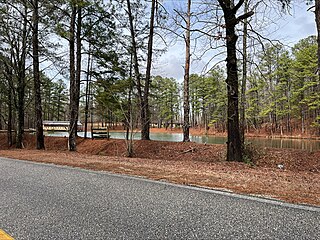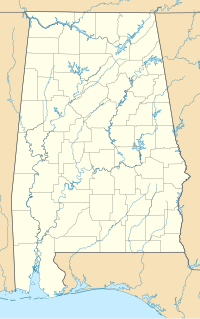
Etowah County is a county located in the northeastern part of the U.S. state of Alabama. As of the 2020 census the population was 103,436. Its county seat is Gadsden. Its name is from a Cherokee word meaning "edible tree". In total area, it is the smallest county in Alabama, but one of the most densely populated. Etowah County comprises the Gadsden Metropolitan Statistical Area.

Altoona is a town in Etowah County in the U.S. state of Alabama. It is part of the Gadsden Metropolitan Statistical Area. At the 2020 census, the population was 948.

Ashland is a city in Clay County, Alabama, United States. The population was 2,037 at the 2010 census. The city is the county seat of Clay County.

Ariton is a town in Dale County, Alabama, United States. At the 2020 census, the population was 662. It was incorporated in April 1906. The name is a blend of its two predecessor town names: Ariosto and Charlton.

Attalla is a city in Etowah County, Alabama, United States. As of the 2010 census, the population was 6,048.

Ardmore is a town in Limestone County, Alabama, United States, and is included in the Huntsville-Decatur Metro Area. The population was 1,321 at the 2020 census, It borders its sister city Ardmore, Tennessee.

Athens is a city in and the county seat of Limestone County, in the U.S. state of Alabama; it is included in the Huntsville-Decatur-Albertville, AL Combined Statistical Area. As of the 2020 census, the population of the city is 25,406.
Alma is an unincorporated community in Clarke County, Alabama, United States. The community was named for Alma Flinn, a local teacher.
Antioch is a small unincorporated community in Clarke County, Alabama, United States, located south of Grove Hill along US Highway 43. It has several small churches and a fire department.
Aimwell is an unincorporated community in Marengo County, Alabama, United States. Aimwell had a post office at one time, but it no longer exists.
Asbury is an unincorporated community located on Sand Mountain in eastern Marshall County, Alabama, United States. It is located about nine miles east of the county seat of Guntersville. The community was named after a Methodist church, which was named for one of the first Methodist Episcopal Church bishops, Francis Asbury.
Ai is an unincorporated community in Cleburne County, Alabama, United States.
Active is an unincorporated community in Bibb County, Alabama, United States.
Anderson, also known as Anderson Crossroad or Anderson Crossing, is an unincorporated community in Etowah County, Alabama, United States, located 2 miles (3.2 km) northeast of Gadsden on U.S. Route 411. Although its boundaries aren't explicitly defined, as of 2010, it is located partly within the CDP of Tidmore Bend near the northeastern boundary of the adjacent CDP of Coats Bend.
Hamburg, also known as Hamburgh or Hamburg Station, is an unincorporated community in Perry County, Alabama, United States. A post office operated under the name Hamburg from 1833 to 1941.
Arguta is an unincorporated community in Dale County, Alabama, United States.
Asbury is an unincorporated community in Dale County, Alabama, United States.
Aldridge is an unincorporated community in Walker County, in the U.S. state of Alabama.

Abbot Springs is a settlement in Shelby County, Alabama, United States. While the community was once unincorporated, it is now part of eastern Westover. It lies less than 3 miles away from the town of Harpersville. It runs along a branch of Old Highway 280.
Austinville is a former town and now a neighborhood within the city of Decatur in Morgan County, Alabama, United States. It is about 3 miles south from downtown Decatur, centered on the junction of Danville Road and Carridale Street. It was incorporated as a town in 1907 and disincorporated and annexed into the city of Decatur in 1956.
















